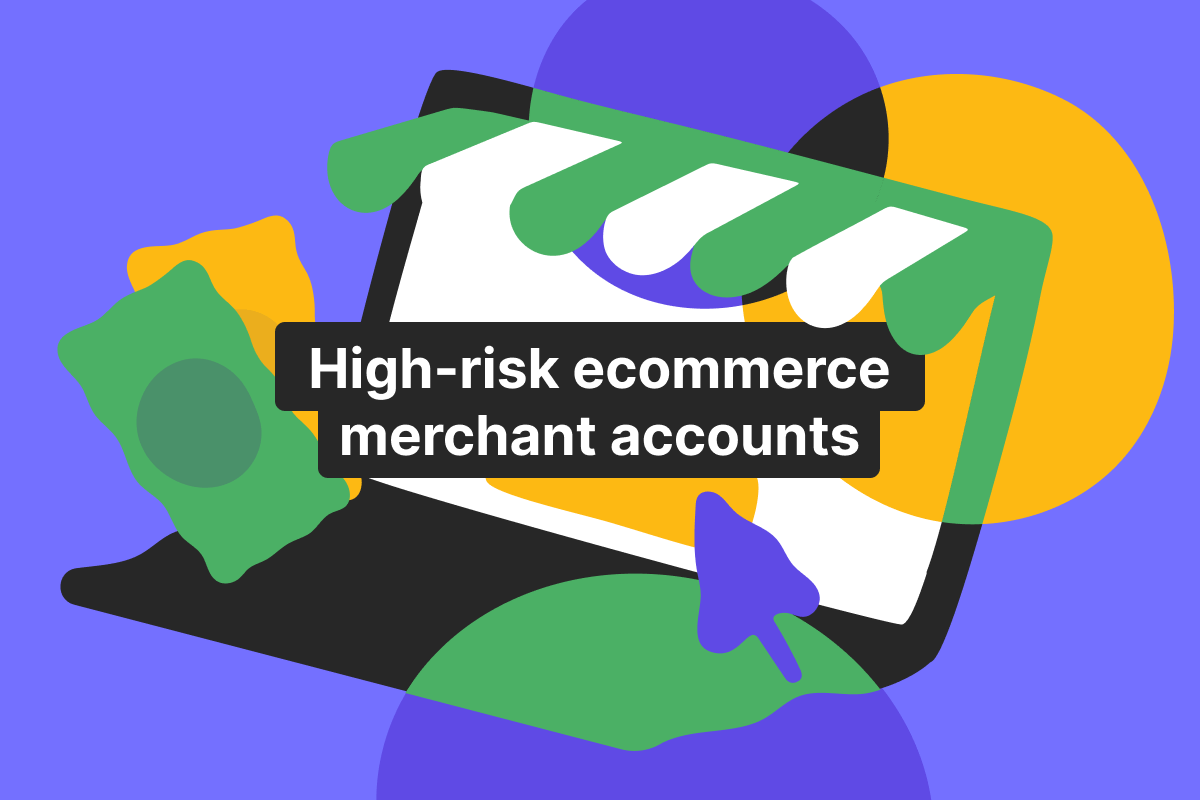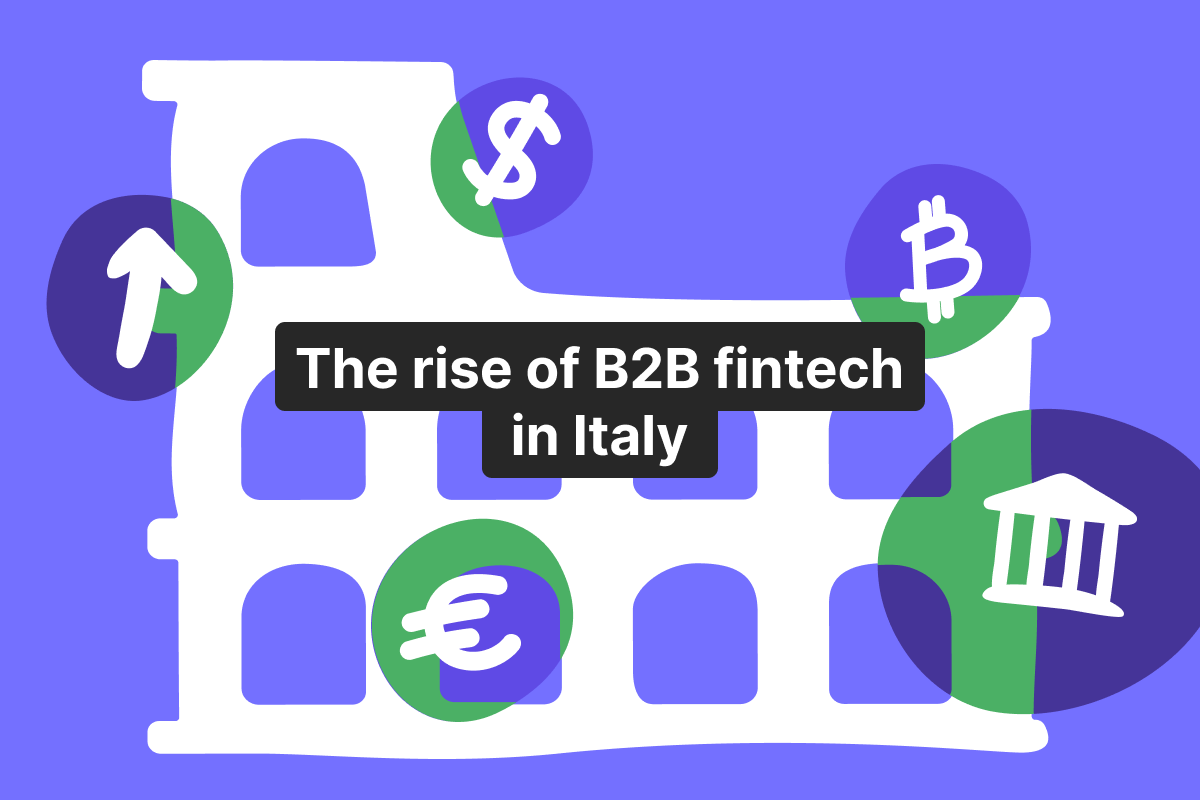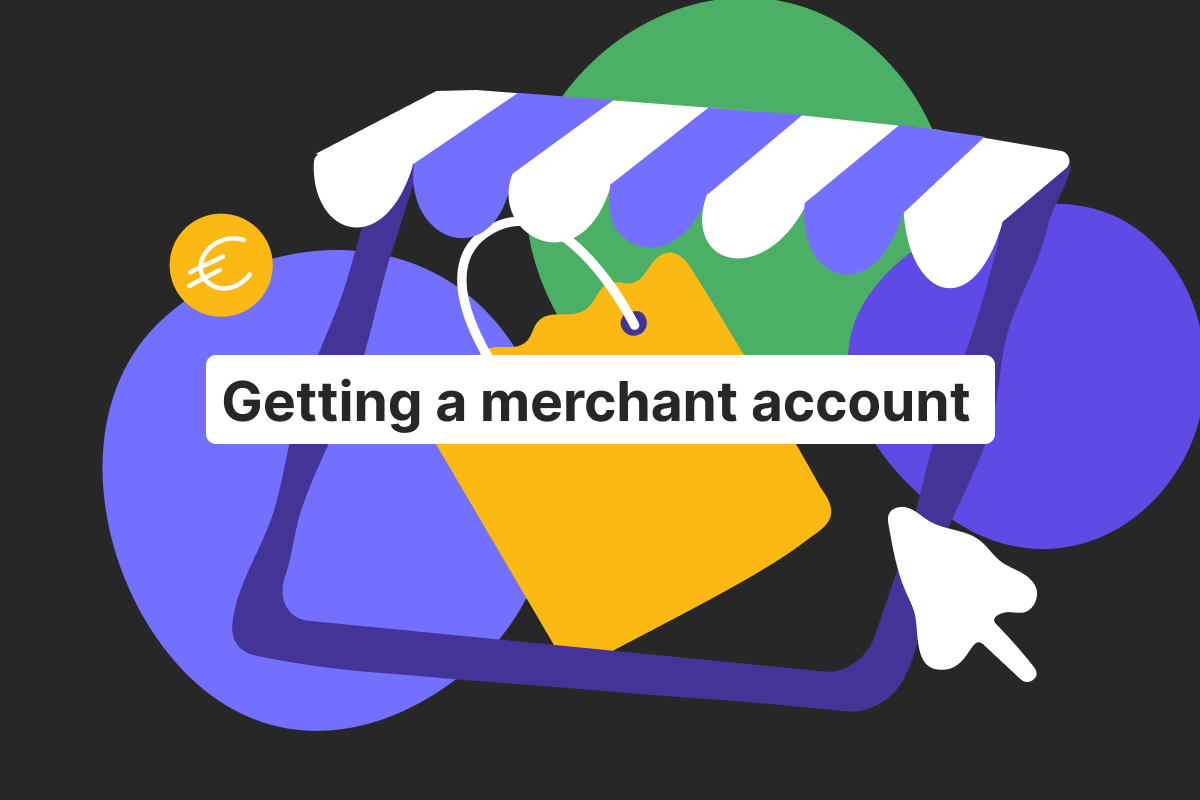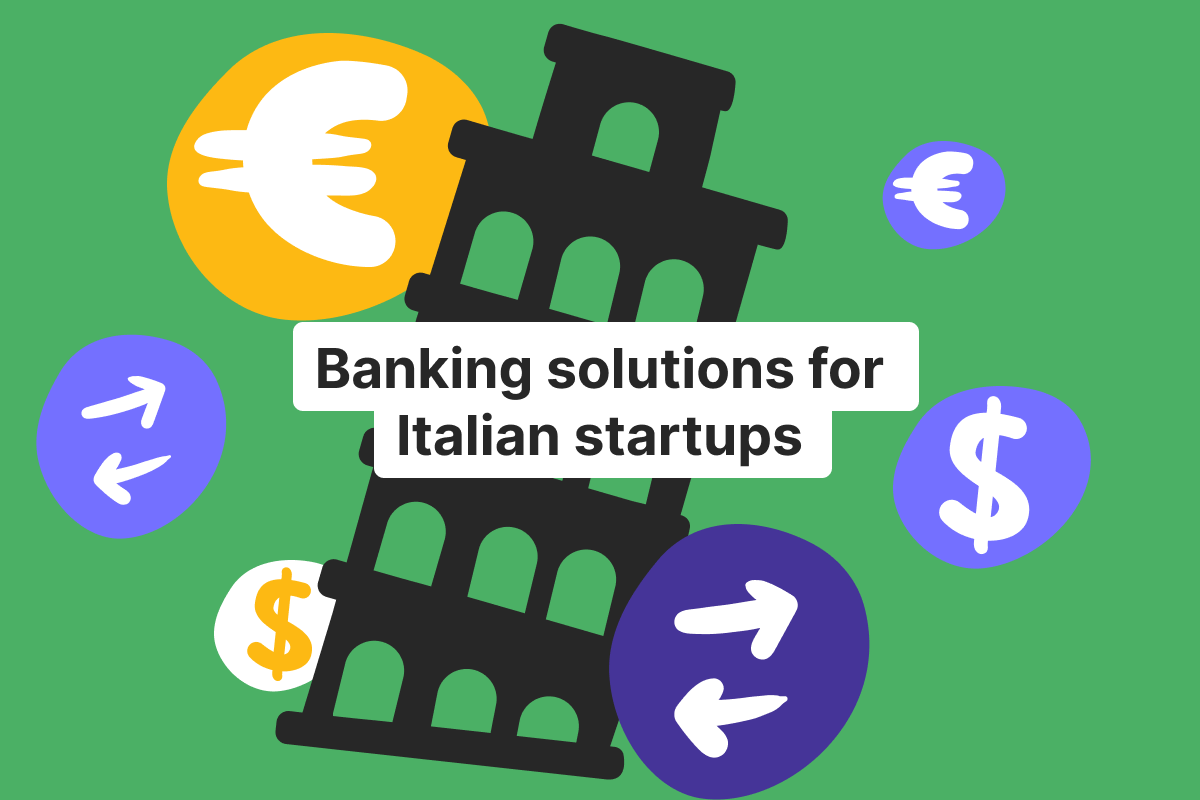A merchant account is a special bank account that has a single important role: to accept payments from customers via credit card or debit card payments. No expenses or taxation, like using a business bank account, just pure payment processing from clients.
So, how could it be considered high-risk?
Among payment processing providers, high-risk usually refers to certain industries that are considered high risk in terms of frequent chargebacks and fraud risk. In reality, any businesses or transactions that are more likely to result in financial loss for banks or a payment processor would be considered high-risk businesses.
When a business falls into this category, payment processing companies may apply higher fees, stricter terms, or just break the partnership.
There are many modern and some traditional payment processors ready to work with high-risk merchants under special high-risk merchant accounts for higher fees.
Some common high-risk industries are defined like that by most merchant account providers (like online gambling), but the border between low-risk merchant accounts and high-risk merchant accounts is very tangible.
So, why are ecommerce merchant accounts considered high-risk, and how can online merchants reduce exposure to fraud risk, chargebacks, and compliance challenges?
At Genome, we have very rich experience with companies from high-risk industries, and we understand the struggles of high-risk payment processing.
A high-risk merchant account isn’t necessarily a bad thing – it simply means your risk profile requires additional monitoring and management. Factors that may lead to being deemed high-risk include poor personal credit history, unstable cash flow, or selling in certain industries with inherent risk factors.
What makes ecommerce merchant accounts high risk?
Without the right payment processing partner or a good business model, any company could fall into high-risk status due to its nature, and regular cash flow from clients. So its merchant account can get reclassified into a high-risk merchant account.
The biggest reason is excessive chargebacks.
More specifically, the chargeback-to-transaction ratio is the percentage of transactions that result in a chargeback.
There are more reasons to be labeled as a high-risk business by payment processor providers, but chargebacks are the main issue that causes the high-risk labeling across the board.
Here is a good example with major card networks: Visa and Mastercard set specific thresholds for the chargeback ratio.
Visa:
Standard monitoring: You will likely be enrolled in the Visa Dispute Monitoring Program (VDMP) if you receive 100 or more chargebacks in a month and a chargeback ratio of 0.9% or higher.
Excessive program: An excessive risk designation occurs if you reach 1,000 chargebacks in a month and a chargeback ratio of 1.8% or higher.
Mastercard:
Excessive Chargeback Merchant (ECM): The initial threshold is 100 or more chargebacks in a month and a chargeback ratio of 1.5% or higher.
High Excessive Chargeback Merchant (HECM): This designation, which carries much higher fees, is for a high-risk merchant with 300 or more chargebacks per month and a chargeback ratio of 3% or higher.
Each payment processor has their own system to measure this ratio, but at least you got the idea.
In ecommerce, chargebacks occur when customers request refunds directly from their card issuers, often claiming non-delivery or dissatisfaction. Because online sales are card-not-present transactions, fraud risks and customer disputes rise sharply, international sales in different currencies could make it even worse.
Each chargeback can result in chargeback fees, penalties, or even account termination, even for a high-risk merchant account.
Merchants selling digital goods, online gaming, or online gambling services face an especially high risk of disputes due to product intangibility and high refund volumes.
Open an account
in Genome online
Here are other reasons why high-risk payment processing is common in ecommerce:
1. Fraudulent transactions and card-not-present risk
Without physical verification, ecommerce is vulnerable to fraudulent transactions and identity theft. High-risk merchants operating across borders often deal with fake orders or stolen cards, leading to losses and compliance violations.
Advanced fraud prevention and risk management tools for international sales are essential for maintaining financial stability and a non-high-risk merchant account status.
2. Regulatory and compliance challenges
Cross-border ecommerce means international sales, which means complex KYC and AML requirements.
Failing to meet these standards can cause a business to be considered high risk, and its merchant account would be transferred to high-risk merchant account status or even lose its merchant account.
Financial institutions monitor payment processing to prevent financial crimes like money laundering and terrorism financing.
3. High transaction volumes and scaling unpredictability
When ecommerce stores scale quickly, payment processors may flag unpredictable spikes in sales as financial instability. With more risk assessment problems, good payment processing services will help here.
Common industries and business models marked as high risk
While any company can be flagged as high-risk, certain industries are inherently riskier due to product type or customer behavior. Common high-risk industries include:
Subscription models. Recurring billing can lead to more chargebacks and higher processing fees. A high-risk merchant manages specific chargeback rates and fraud risks through tighter controls, reserves, and monitoring – card network thresholds still apply.
International ecommerce. Cross-border transactions increase fraud risks and compliance complexity. A high-risk merchant account may be considered necessary for international business, especially with offshore payment processing, depending on the actual risk profile.
Digital goods and services. Intangible delivery often results in customer disputes. Regular ecommerce with low dispute rates may qualify for a regular merchant account.
Adult entertainment. Categorized as high-risk due to content restrictions and regulatory pressure. Fraud prevention is more difficult because of anonymity preferences and diverse payment methods.
Online gambling and online gaming. Subject to heavy financial regulation and rolling reserves. It is one of the most high-risk industries, and a high-risk merchant account is often the way to go.
Consumer credit vendors. Many high-risk businesses, like credit repair and related credit repair services aimed at fixing low credit scores, have high refund potential.
Many high-risk merchants operate successfully in these fields by using specialized high-risk payment processors who understand their needs.
Some high-risk payment processing providers specialize in high-risk payment in exchange for overall higher fees and chargeback fees specifically.
High-risk merchant account status is manageable for many high-risk merchants and high-risk businesses, but expect higher fees, reserves, and stricter controls.
Impact of being a high-risk merchant
The first problem is that not every payment processor is willing to work with high-risk merchants or companies from high-risk industries.
There could easily be a situation when your account is labeled as a high-risk merchant account and may be subject to payout holds, increased rolling reserves, temporary suspension, or – in severe cases – termination, and may face much higher chargeback fees.
Even if you find a decent high-risk payment processor, being a high-risk merchant affects nearly every aspect of payment processing services. Here’s how.
Higher processing fees
To offset potential losses, banks and payment processors charge higher payment processing fees. These may include setup fees, transaction fees, and early termination fees. Separately from processor fees, card-network monitoring programs (e.g., Visa/Mastercard) can impose additional assessments/penalties if chargeback thresholds are exceeded. Compared to low-risk merchant accounts, the cost difference can be significant. That’s why transparent pricing is very important, and reliable payment solutions for ecommerce should be a thing.
Difficulty opening and maintaining accounts
High-risk accounts differ from standard ones in their stricter approval process. The underwriting process often requires proof of financial stability, business credit history, and consistent revenue. Businesses with low credit scores or a short financial history may face rejection.
Businesses operate continuously, and onboarding for several months could be unacceptable.
Rolling reserves and cash flow restrictions
Many high-risk merchant services involve holding a portion of funds in rolling reserves – temporary buffers against chargeback fees and refunds. While this protects payment processing companies, it can create short-term cash flow challenges for merchants.
High-risk payment processor providers have a common practice, where a percentage of your daily sales (for example, often 5%–15%) is held by the payment processor for a set period (commonly 60–180 days), with exact percentages and durations varying by provider, risk profile, and performance.
This significantly restricts your access to working capital, especially during periods of high growth.
Doing a high-risk payment could be painful without a good high-risk merchant account.
How to reduce risk as an eCommerce merchant
Reducing risk isn’t just about avoiding penalties – it’s about building trust with customers and partners. It is not an exaggeration that with the right payment processor partner, you could entirely diminish negative aspects of being a high-risk business or even avoid its status, but it would require tailored solutions. On the other hand, without a good provider, you may be stuck in a continuous search for reliable payment processors while the business works under pressure.
1. Implement strong fraud detection tools
Use modern fraud prevention software and address verification systems to filter suspicious activity before it becomes costly. Reliable payment processing partners can offer real-time alerts.
A good anti-fraud solution is almost half of the deal.
For example, take a look at AVS (Address Verification System) and CVV verification to detect suspicious activity early. These tools confirm whether the buyer’s billing address and card details match, significantly reducing the risk of fraudulent transactions and customer disputes.
Any high-risk payment would be under automated control, and payment processing would become much easier.
2. Maintain transparent refund and return policies
Clear communication minimizes customer disputes and prevents unnecessary chargebacks. Merchants should display transparent pricing and refund conditions prominently on their sites.
Many high-risk merchants experience frequent chargebacks simply because their customers aren’t aware of refund timelines or subscription renewal terms.
To lower your chargeback ratio, always:
Display refund and return policies clearly on product pages.
Include transparent pricing and recurring billing terms.
Offer easy ways for customers to contact support before filing disputes.
Not a single high-risk merchant account, and the best high-risk payment prevention tools would help with human interaction.
A transparent approach only improves trust, reduces customer disputes, and proves to financial institutions that your business manages risk responsibly.
3. Optimized payment gateway and transaction monitoring
Use a reliable payment processor that supports real-time transaction monitoring, fraud scoring, and alerts for unusual patterns.
Any high-risk payment has a pattern, and a good tool will make it easier for high-risk merchants.
Secure payment gateway systems can flag suspicious orders before they’re processed, preventing chargebacks and unauthorized payments.
Merchant account providers usually provide this for any high-risk merchants and high-risk businesses, but just in case, be aware.
4. Partner with a reputable payment processor
Finally, the most effective way to reduce risk is to choose a reliable payment processor experienced in high-risk payment processing. Such providers understand high-risk industries and can tailor their payment processing services to your business model.
A right payment processing partner should offer:
Secure payment gateways with encryption and tokenization;
24/7 fraud prevention monitoring for high-risk businesses;
Multi-currency accounts for high-risk merchants;
Clear contracts with no hidden higher fees or early termination fees.
Working with a trusted provider ensures that even high-risk accounts differ positively – with advanced security, faster settlements, and transparent conditions for scaling.
High-risk payment processing is costly, so do not fall for the cheapest options – they’re definitely going to get their money one way or another.
How Genome helps high-risk eCommerce businesses
Genome is an EU-licensed payment processor that specializes in supporting high-risk merchants with modern fintech solutions and a business account. See for yourself:
Convenient, compliant merchant account setup
Genome simplifies the underwriting process, enabling merchants to open high-risk accounts completely online and compliantly.
We’ve been doing this long enough to know how to make it efficient. We have experience working with companies from high-risk industries.
Secure payment instruments and multi-currency support
Genome offers secure payment tools via Open Banking, allowing companies to receive SEPA Instant/Credit Payments from customers. Card payment processing is coming soon, too.
With multi-currency accounts, businesses can transfer money between accounts in 12 different currencies and use them for corporate expenses.
Transparent pricing and tailored solutions
We have a transparent pricing policy – no hidden or higher fees for growth. Each merchant receives tailored solutions after onboarding to fit their business model and risk profile. We want to bring reliable payment solutions to everyone.






